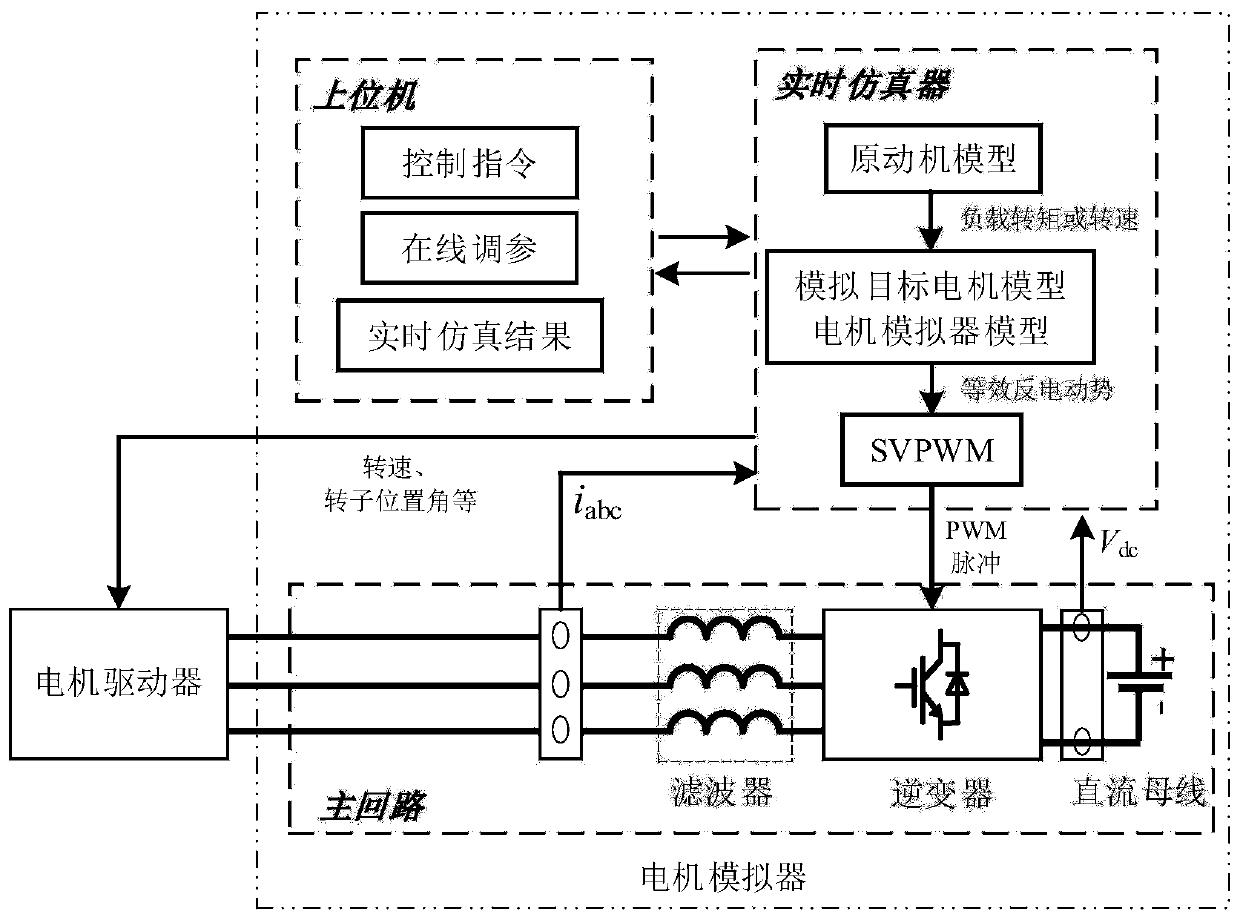Power level simulation control method and device of three-phase alternating current motor
A motor simulation and three-phase AC technology, applied in simulators, general control systems, control/regulation systems, etc., can solve problems such as simulation errors and current feedback errors, and avoid FPGA programming and expensive high-performance computing chips Effect
- Summary
- Abstract
- Description
- Claims
- Application Information
AI Technical Summary
Problems solved by technology
Method used
Image
Examples
Embodiment 1
[0096] Embodiment 1 Squirrel-cage asynchronous motor:
[0097] (3) formula becomes:
[0098]
[0099] where ψ rd is the rotor d-axis flux linkage; L m , L s , L r are the stator-rotor mutual inductance, stator self-inductance and rotor self-inductance respectively; σ is the flux leakage coefficient, and σ=1-L m 2 / (L s L r ). ψ rd It can be obtained by the flux observer. For example, take the following flux observer based on the current model:
[0100]
[0101] ψ in the formula rα with ψ rβ is the component of the rotor flux linkage along the α-axis and β-axis in the two-phase stationary coordinate system (that is, the αβ coordinate system), T r is the rotor time constant, ω e is the rotor electrical angular velocity. Observe that ψ rα with ψ rβ Afterwards, ψ is calculated by rd with θ:
[0102]
[0103] Meanwhile (4) becomes:
[0104]
[0105] With the help of (5), the rotor speed can be calculated.
Embodiment 2
[0106] Embodiment 2 permanent magnet synchronous motor:
[0107] (3) formula becomes:
[0108]
[0109] where ψ f is the flux linkage generated by the permanent magnet; L d , L q are the d-axis inductance and q-axis inductance of the motor, respectively.
[0110] (4) becomes:
[0111] T e =1.5n p [(L d -L q )i sd i sq + i sq ψ f ] (11)
[0112] With the help of (5), the rotor speed can be calculated, and the θ required for dq transformation can be obtained by integrating the speed.
Embodiment 3
[0113] Embodiment 3 Electric excitation synchronous motor:
[0114] (3) formula becomes:
[0115]
[0116] In the formula, L d , L q are the d-axis inductance and q-axis inductance of the motor, m af is the exciting inductance, i f is the excitation current.
[0117] (4) becomes
[0118] T e =1.5n p [(L d -L q )i sd i sq + i sq m af i f ] (13)
[0119] With the help of (5), the rotor speed can be calculated, and the θ required for dq transformation can be obtained by integrating the speed.
[0120] Compared with the expression in the embodiment of the permanent magnet synchronous motor, the expression in the embodiment of the electric excitation synchronous motor is only the rotor d-axis flux linkage ψ f change to m af i f , that is, the rotor flux linkage produced by the permanent magnets is transformed into that produced by the excitation current.
[0121] It is important to note that since there is no limit to L d , L q The value of , this simulation...
PUM
 Login to View More
Login to View More Abstract
Description
Claims
Application Information
 Login to View More
Login to View More - R&D
- Intellectual Property
- Life Sciences
- Materials
- Tech Scout
- Unparalleled Data Quality
- Higher Quality Content
- 60% Fewer Hallucinations
Browse by: Latest US Patents, China's latest patents, Technical Efficacy Thesaurus, Application Domain, Technology Topic, Popular Technical Reports.
© 2025 PatSnap. All rights reserved.Legal|Privacy policy|Modern Slavery Act Transparency Statement|Sitemap|About US| Contact US: help@patsnap.com



